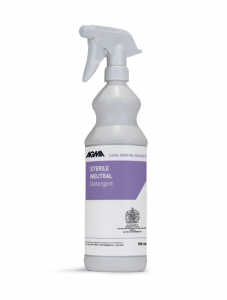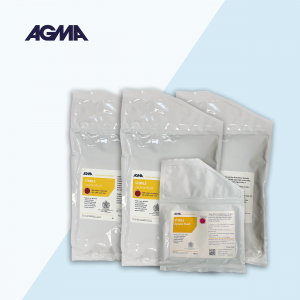Contamination control is a constant challenge in cleanrooms.
With a well-thought-out and diligently enacted cleaning and disinfecting regime, both viable and non-viable contamination can efficiently be controlled to the required standard.
However, reliable control can only be attained with the right product, used by trained staff, with qualified oversight and regular monitoring.
Below, we will go through the core considerations when putting in place a successful cleaning and disinfection regime. This includes factors to consider when selecting the most appropriate cleaning products, selecting disinfectants, the method and frequency of your cleaning schedule, and choosing your supplier.
Considerations when choosing a cleaning product
- When choosing a cleaning product, consider its chemical composition to ensure compatibility with cleanroom surfaces and equipment.
- Verify that it doesn’t compromise the efficacy of your chosen disinfectants.
- Opt for products available in a range of formats to simplify validation across different applications.

View our neutral detergent range.
Considerations when choosing a disinfectant
- Select disinfectants that have proven biocidal effectiveness against your target microbes.
- Select disinfectants with compatible chemical compositions for your cleanroom surfaces and equipment or residues.
- Consider factors including temperature, pH, mode of action, kill spectrum, and contact time.
- Assess concentration/dilution if applicable and prioritise operator health and safety.
- Look for products available in different formats to streamline validation.

View our Zyceine range.
Guidance for cleaning and disinfection methods
Your cleaning and disinfection methods might vary depending on the products you use. However, there are some key guidelines which will always apply.
Firstly, the application of cleaning and biocidal agents must be precise and measured to ensure complete and uniform coverage.
Secondly, training and adherence to clear standard operating procedures are essential.
Lastly, cleaning must be completed before disinfection begins.
Adopt these general cleaning methods:
- Begin in critical areas, the cleanest area of the highest grade, and work down towards the unclassified environment.
- Start at the furthest location from the exit.
- Clean from the highest point to the lowest, addressing ceilings, walls and floors.
Guidance for cleaning and disinfection frequency
The frequency of cleaning and disinfection will vary significantly between different facilities. However, in all cases, they must be carefully determined, validated and continually assessed.
These general principles about cleaning frequency apply:
- The busier the cleanroom and the higher the grade, the more frequently the cleanroom will be cleaned and disinfected.
- The most critical area in the cleanroom will be serviced most regularly, followed by the areas most at risk of facilitating the transfer of contamination to the critical area. The greater the risk of contaminating the critical area and the greater the frequency of that risk, the more frequently the area will be cleaned and disinfected.
- Different areas will be cleaned and disinfected at different frequencies.
- Horizontal surfaces will be attended to more regularly than vertical surfaces.
- Effective monitoring will identify deviations and initiate corrective action.
Additional product considerations:
There are some further product considerations you need to consider:
- Products in grade A and B areas should be sterile prior to use. If non-sterile products are used in grade C and D areas, these should be monitored for viable microbial contamination.
- All cleaning requires the removal of contamination, this is typically done by wiping. Different wipe material compositions are optimal for different uses and environments. The folding type of the wipe also varies. You could opt for pre-folded wipes for greater efficiency.
- The use of a sporicide is a GMP requirement.
- Residue from disinfectants must be managed carefully, rinsing with Sterile WFI quality water is a popular and effective method.
Choosing your supplier
Selecting the right supplier for your cleanroom products is a critical decision. Price matters, but it’s important to weigh the cost of acquiring a superior product against the potential consequences of using an inferior one.
To make an informed choice, consider several factors when evaluating potential suppliers:
- A reliable supply to minimise interruptions in your cleanroom operations.
- Adherence to manufacturing standards and quality control measures.
- Commitment to customer service to help meet your specific cleanroom requirements.
For more information on AGMA products see our healthcare brochure, and remember the AGMA team is always happy to answer questions.


